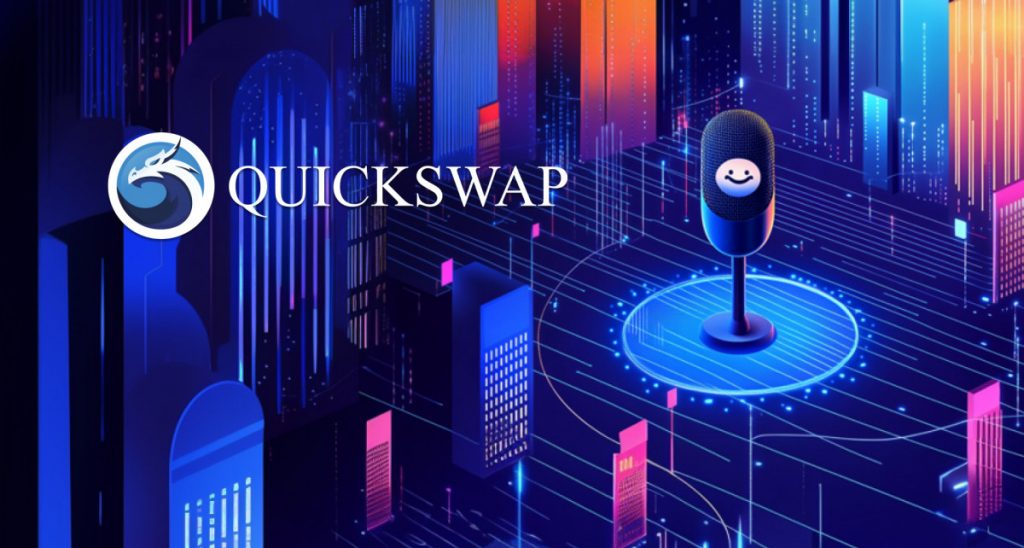
QuickSwap, a decentralized exchange operating on the Polygon network, released a new episode of its weekly podcast series “The Aggregated” on the social platform X.
This time the conversation explored the theme “Memecoin Mania in 2025/2026?” offering a wide range of insights and perspectives on the potential future of memecoins.
The discussion was moderated by Roc Zacharias, co-founder of QuickSwap, together with Aztec Amaya, CSO of Lunar Digital Assets and founder of LitVM. They were joined by a range of industry voices, including Aven, marketing lead at Dogechain’s Layer 2 for DOGE; $0.02Timmy from Polygon’s marketing team; Joel, business development and marketing representative for the open-source cryptocurrency Dash; Cris, co-founder of the utility memecoin Krypto Cock Coin; Sergei from Kumeka, a Solana community group; and Luc, marketing and business development lead for the online strategy game Medieval Empires, among others.
After brief introductions, the conversation turned to key questions shaping current trends in the memecoin space. One of the first topics addressed was the perception that all memecoins are scams. Panelists argued instead for a spectrum: at one end are established projects like DOGE and community-driven coins with some utility; at the other are so-called “casino coins,” often appearing on networks like Solana and vanishing within 24 hours. The consensus was that DOGE and utility-focused memecoins offer stronger prospects, while casino-style tokens inspire little confidence.
Speakers noted that the term “memecoin” in 2025 is still associated by many with fast pump-and-dump schemes. However, projects such as Dash aim to redefine the category as “utility memecoins,” combining community value with practical use cases. DOGE was also highlighted as a case study—originating as a community token, later evolving toward utility, and then entering a speculative boom during the “Elon Musk era.” Although DOGE’s popularity reshaped the memecoin landscape, panelists observed that its practical use has declined, illustrating the broader lifecycle of meme-based tokens.
The panel also stressed that it is not possible to label a memecoin as legitimate or fraudulent at first glance. Evaluating a project requires time, research, and transparency from developers about their goals and offerings. Some described the pattern of new tokens being launched quickly, promoted with hype, and then abandoned, contrasting this with projects striving for credibility and utility.
Discussion then shifted to platforms like Pump.fun, where users have engaged in extreme behavior to attract attention and funding. In response to problematic cases, Pump.fun disabled certain features such as video uploads. Panelists debated whether platforms should bear responsibility for how users behave, with some arguing that providing infrastructure does not absolve them from regulatory or ethical considerations. Others countered that excessive moderation risks stifling innovation and undermining the business models of participants.
Speakers acknowledged that a “middle curve” exists between playful experimentation and outright excess, which often leads to large-scale content removals. Despite controversy, platforms like Pump.fun are expected to grow in popularity, as they appeal to audiences drawn to unfiltered internet culture.
The challenge, panelists agreed, lies in balancing growth with appropriate safeguards. Too much censorship could be dangerous, yet platforms must also consider how highly publicized extreme behavior reflects on the broader cryptocurrency space.
The discussion highlighted that it is important to recognise that defining these boundaries is not only a regulatory issue but also a cultural one, touching on how digital communities and financial innovation intersect.
The session attracted roughly 400 participants tuning in who actively engaged with questions and comments. The episode also welcomed guest speakers from some of the most interesting projects in the space, who casually joined the conversation to share their unique insights and expertise.
A full recording of the episode is available via the link for those seeking a deeper dive into the topic.
“The Aggregated” is a weekly Web3-focused podcast broadcast every Friday at 3 pm UTC on the social platform X. It was first introduced in 2023 under the title “All Roads Lead to Polygon” before changing its name and expanding its scope to encompass a broader spectrum of blockchain projects and ecosystems. Over time, it has established a reputation as a place for in-depth conversations and forward-looking debates in the digital asset industry.
Over the past year, the show has featured a range of influential guests from sectors including blockchain, finance, technology, politics, and entertainment. “The Aggregated” invites participants from emerging projects and new ecosystems, as well as established leaders and key influencers, fostering connections and serving as a bridge across the Web3 community.
A standout feature of the podcast is its inclusive style. Even with speakers joining from diverse time zones, highlighting the global reach of the Web3 space, the hosts consistently create a relaxed yet informative atmosphere, framing discussions as if around a large round table where everyone is a friend and encouraged to share their perspective. This approach, combined with contributions from notable industry figures, helps the podcast to maintain its unique position within the expanding Web3 media landscape.
Some of “The Aggregated”’s recent episodes explored on-chain betting, gambling, and prediction mechanisms within decentralized platforms, as well as debates on whether incentive structures in DeFi require reform, attracting a lot of attention and a broad audience.
The post QuickSwap’s ‘The Aggregated: Exploring The Future Of Memecoins And Global Web3 Trends — What Lies Ahead? appeared first on Metaverse Post.
Also read: $2M Chainlink Whale Accumulation—Preparing For $LINK Fall or Run?